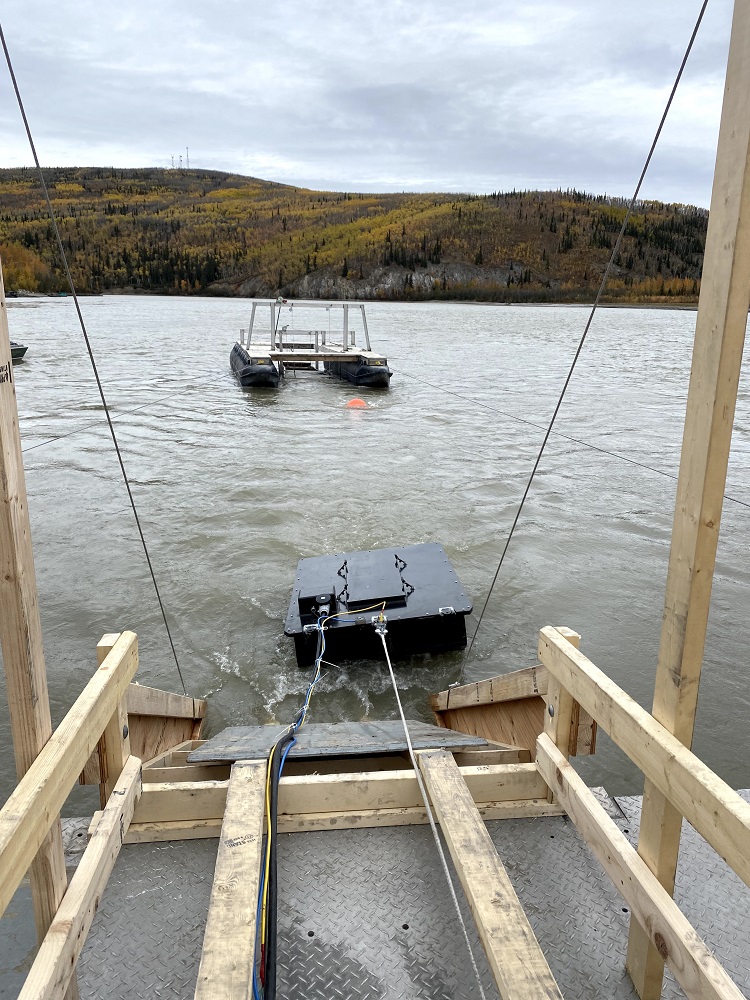The first week of testing our team’s clean hydropower system is complete. Team members from Alaska Center for Energy and Power (ACEP) at the University of Alaska Fairbanks, BladeRunner Energy and LifeWater Scientific as well as the Alaska Board of Fish and Wildlife all traveled out to the Alaska Hydrokinetic Energy Research Center (AHERC) on the Tanana River outside of Fairbanks, AK. Over the course of a week, we successfully deployed and tested the hydrokinetic rotor, torque rope and generator housing from a barge on the Tanana River Test Site. The barge was pushed into place by a Munson boat out into the center of the river where it was attached to an anchored debris shield. The debris shield is designed to divert surface debris floating on the river so as to not interfere with testing. Debris resilience is an important design consideration for the system.

Over several days, we incrementally deployed all components and began recording data. We used an ADCP for measuring the water velocity profile in the river and synchronized this to measurements of torque and rotation rate on the rotor and power generated on the generator. We also recorded acceleration at the generator housing and on the rotating rotor and attached a pressure transducer on the rotor for inferring depth. We will analyze this data to validate our models and learn the system response.
Fish and Wildlife recorded our impact on fish which was negligible yet this will be important to measure during a fish migration.
As a final test, we forced large tree stumps toward the rotor to observe debris resiliency. The rotor was not damaged and it deflected and shed the debris we tested well.
